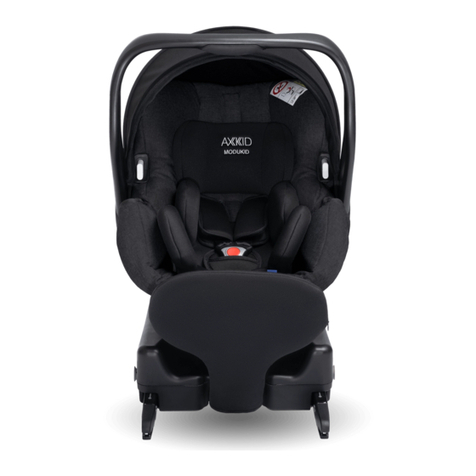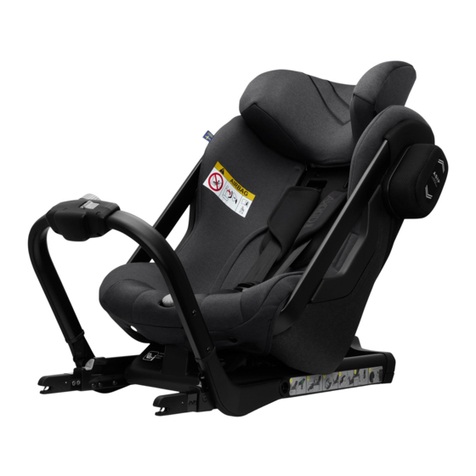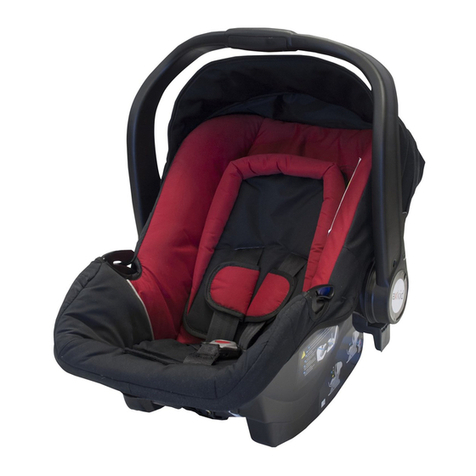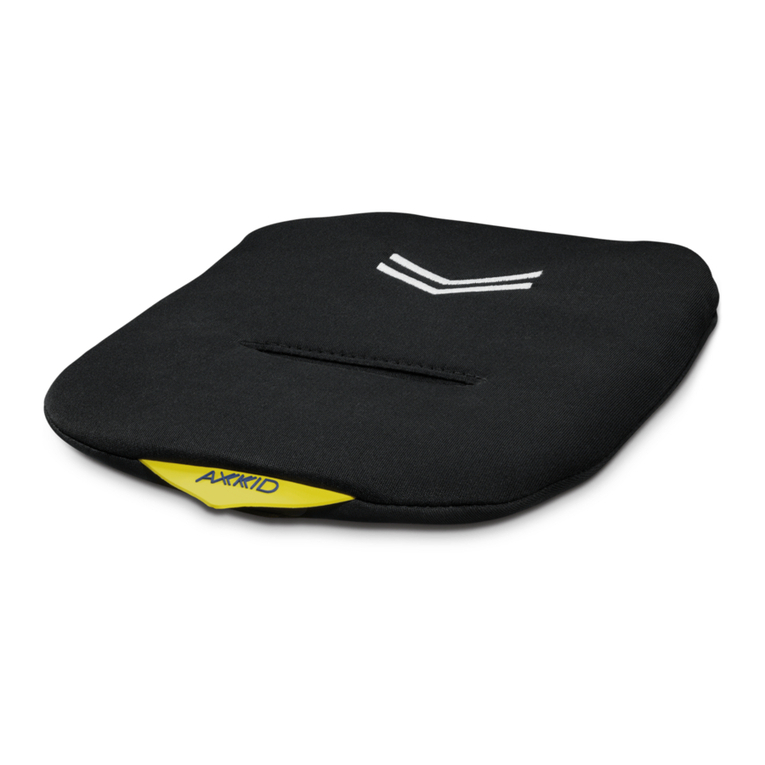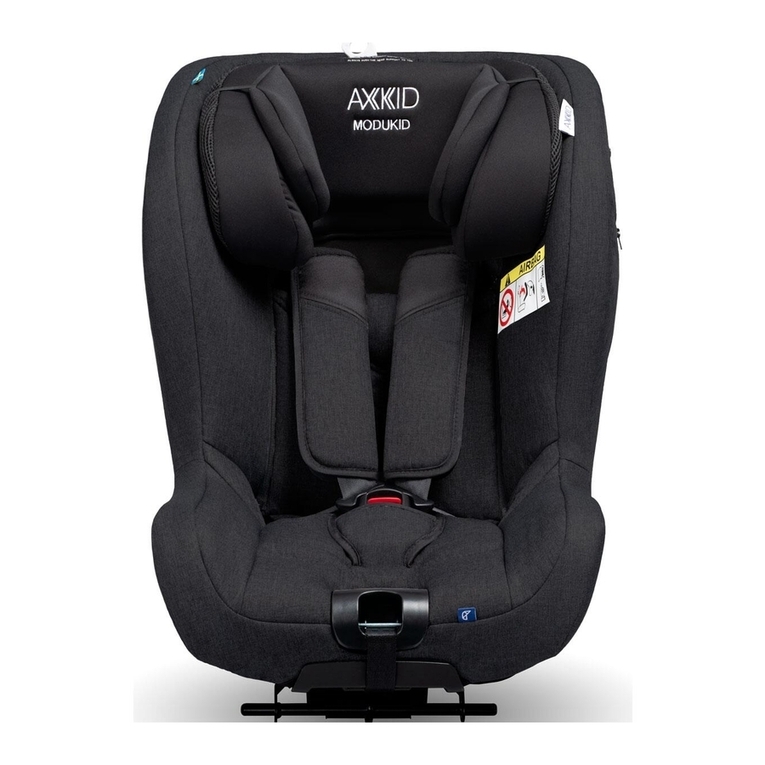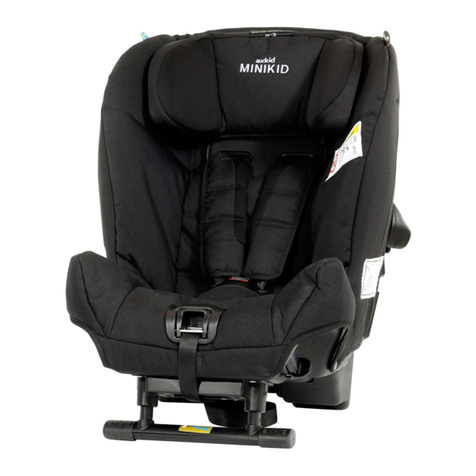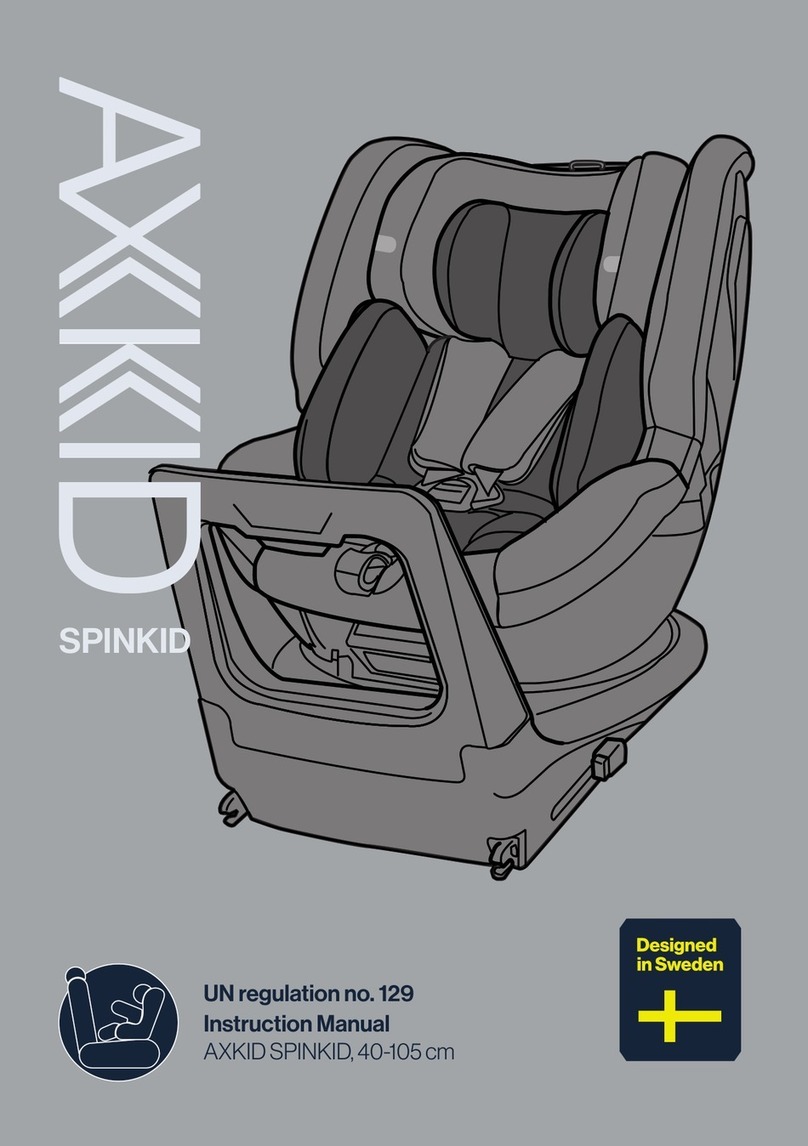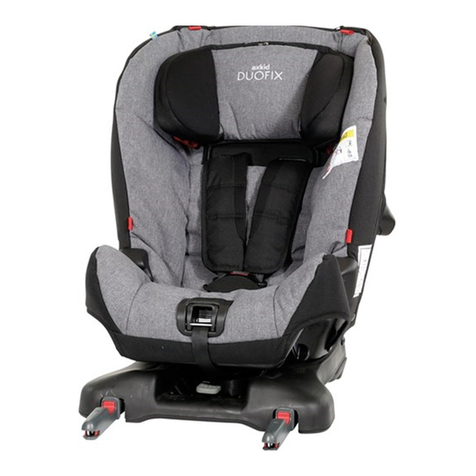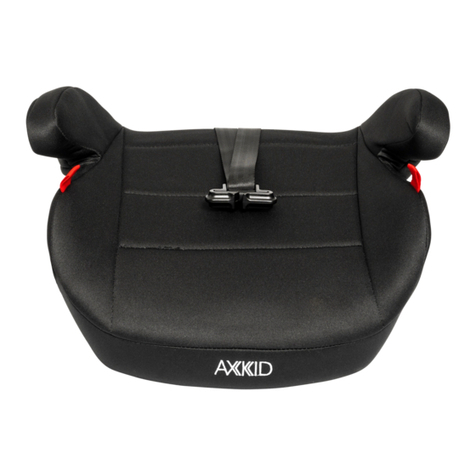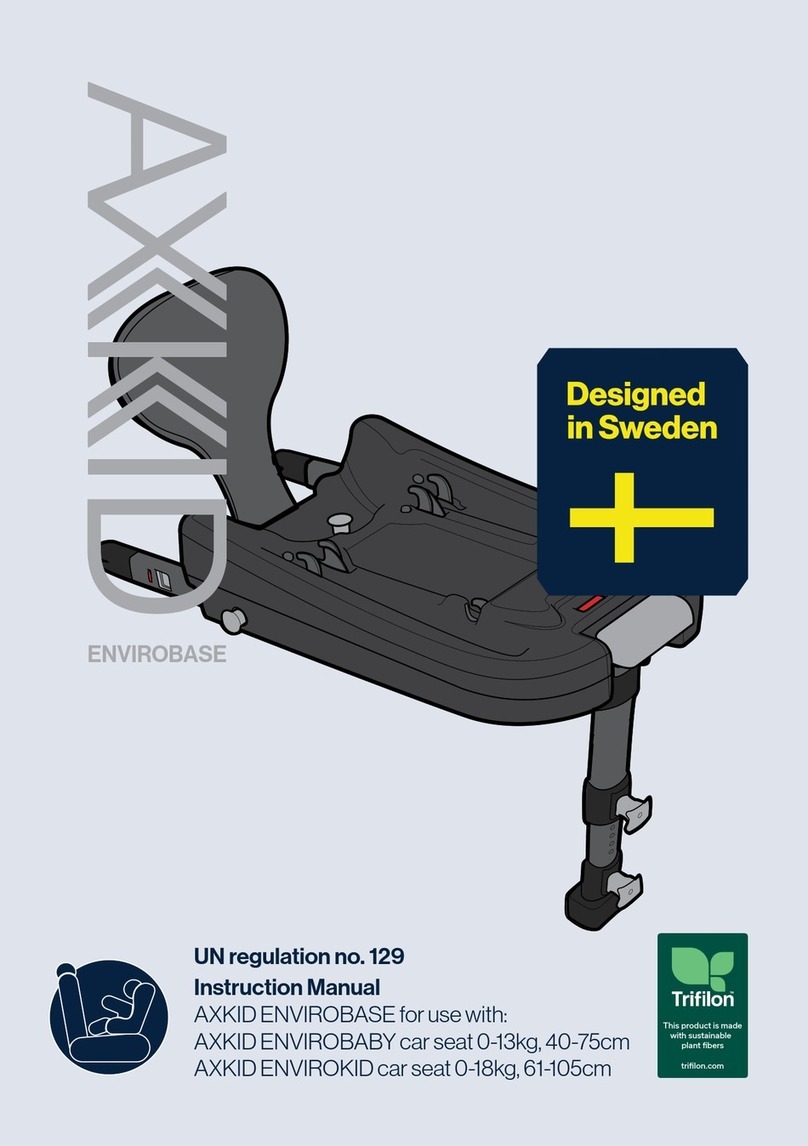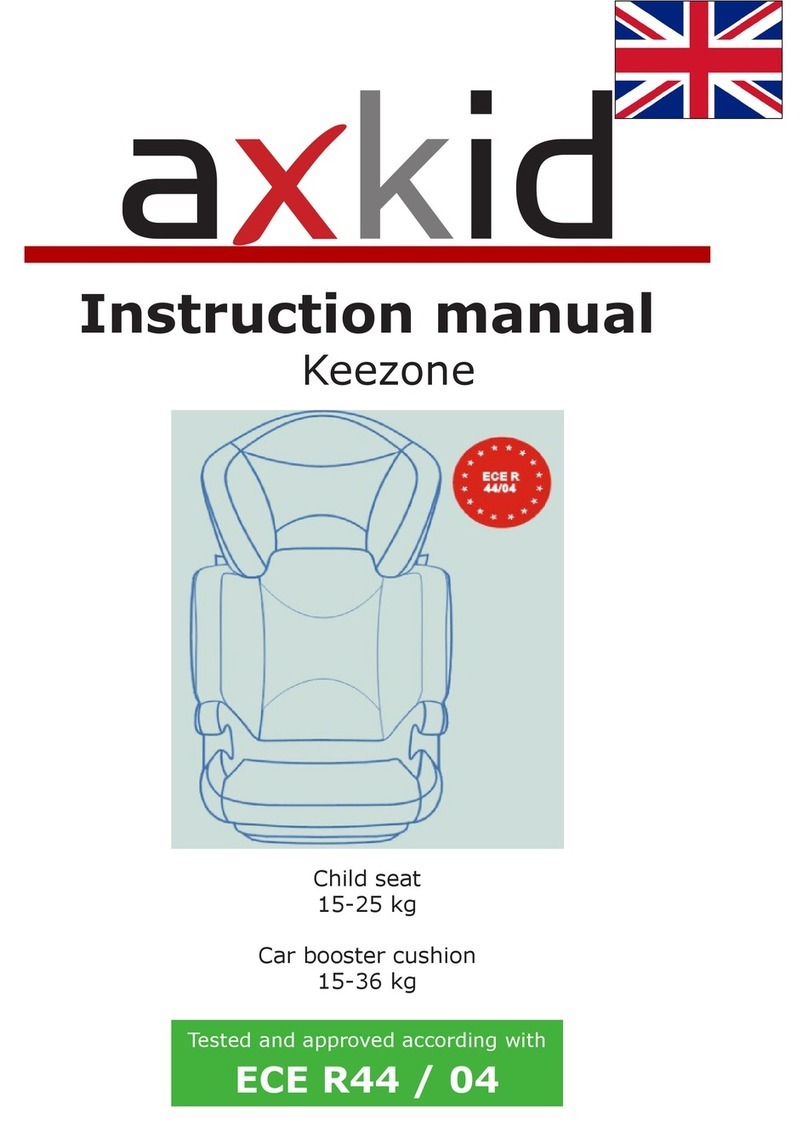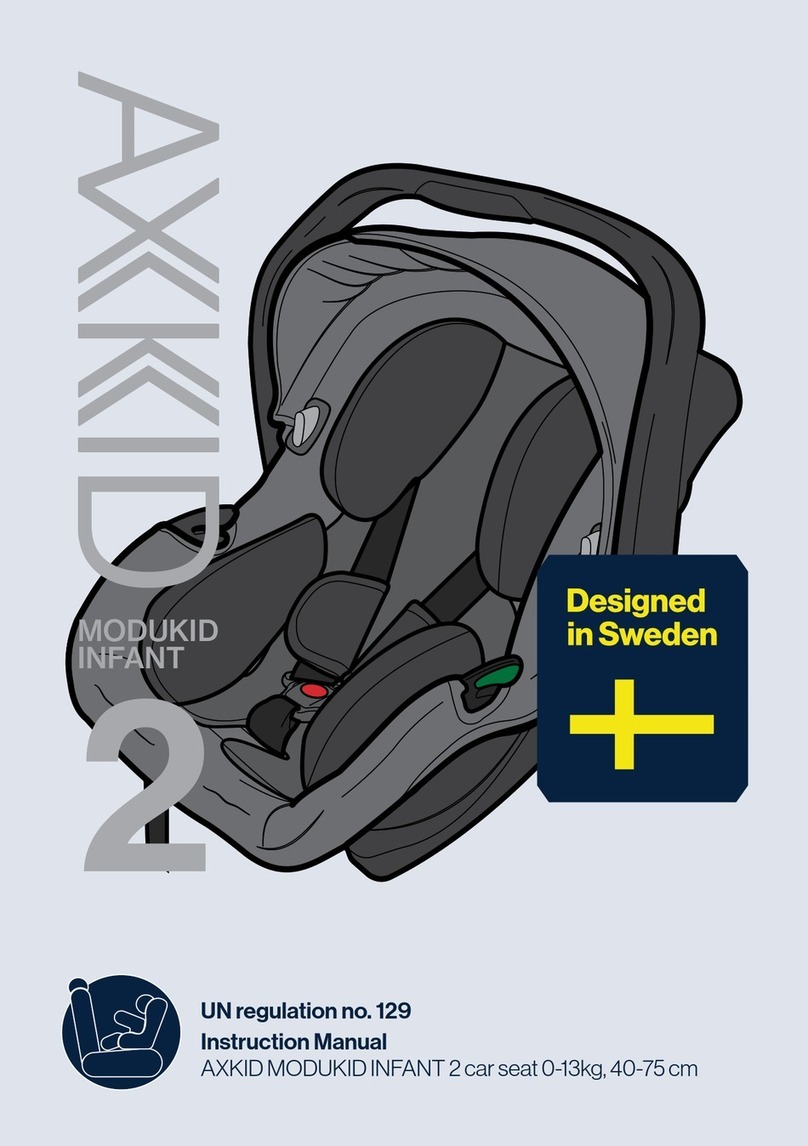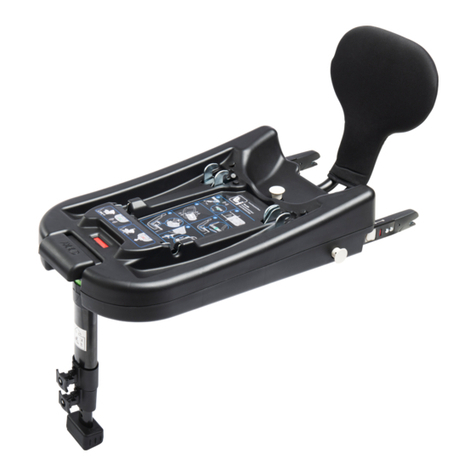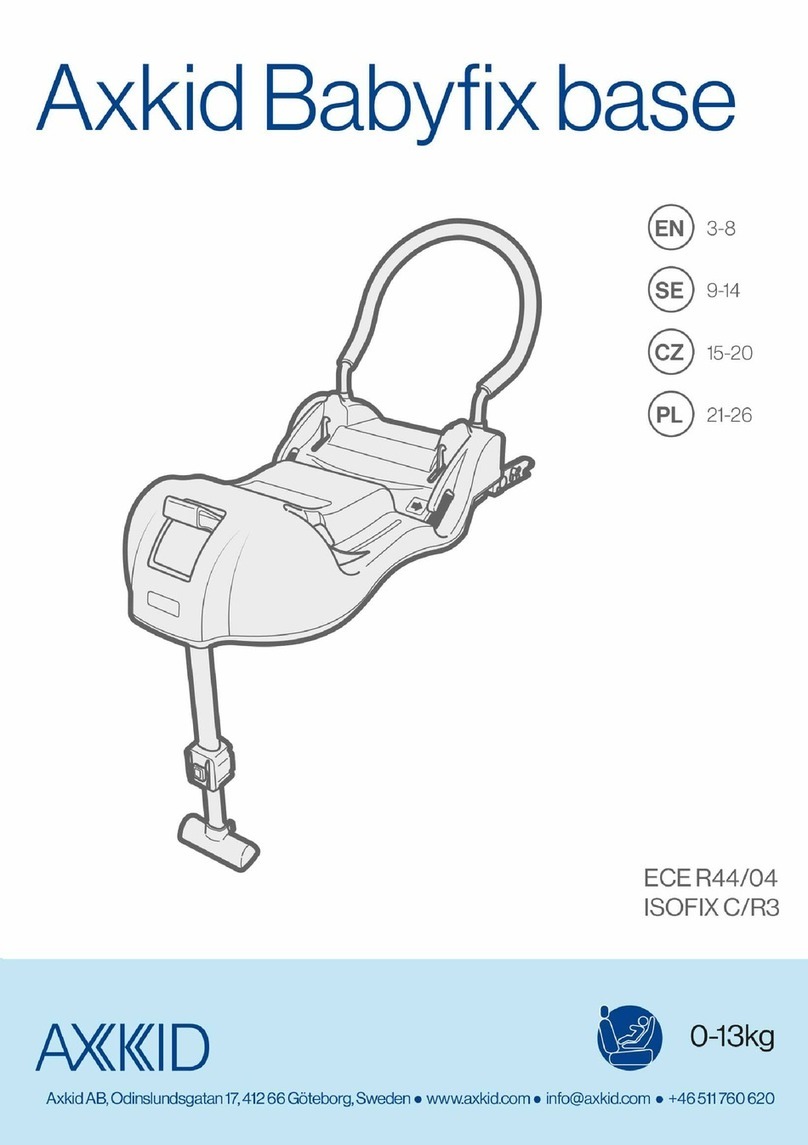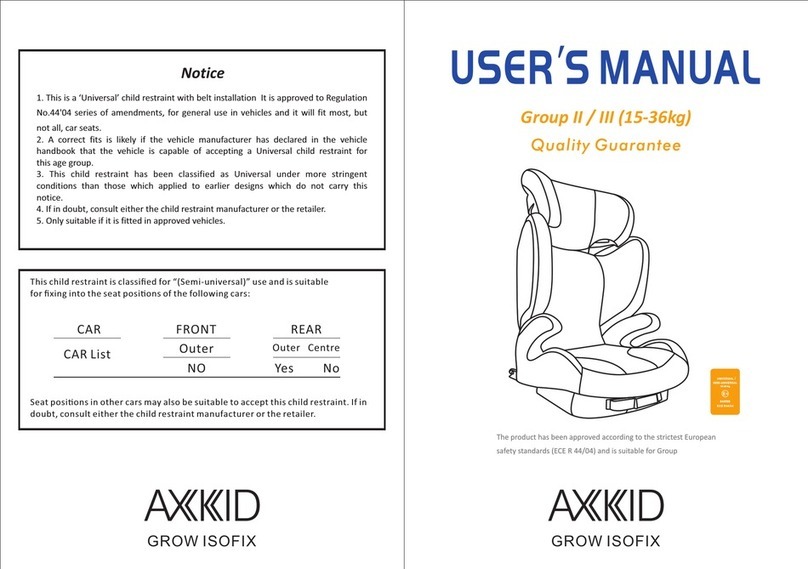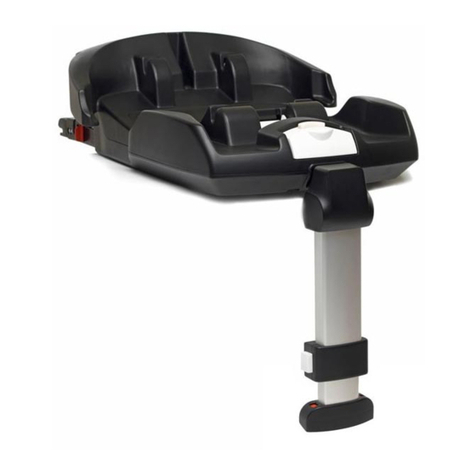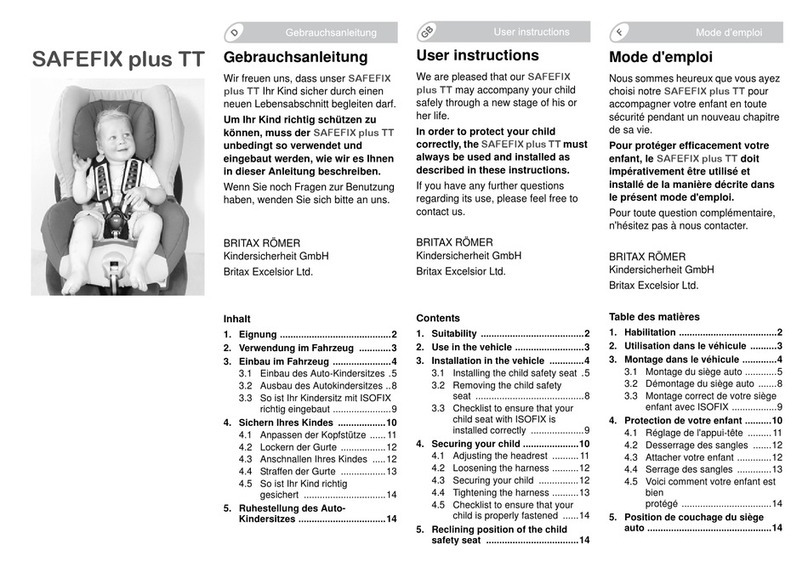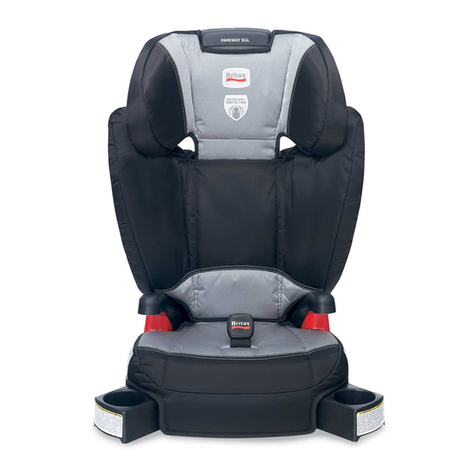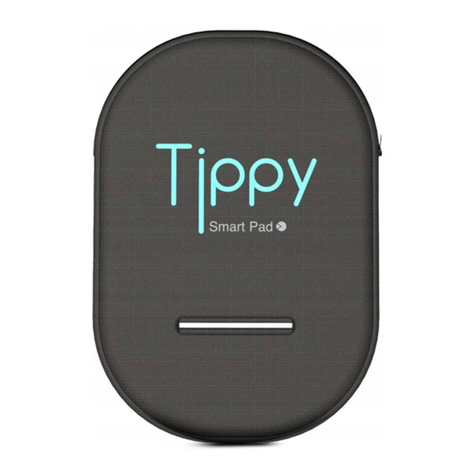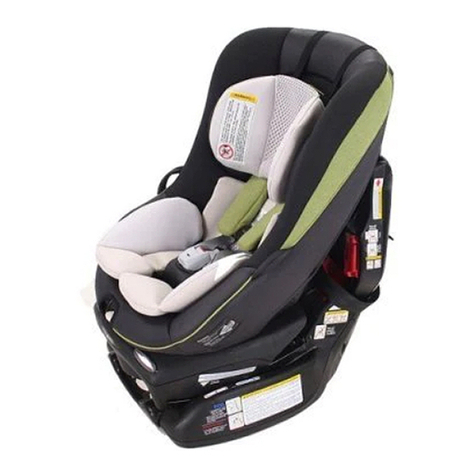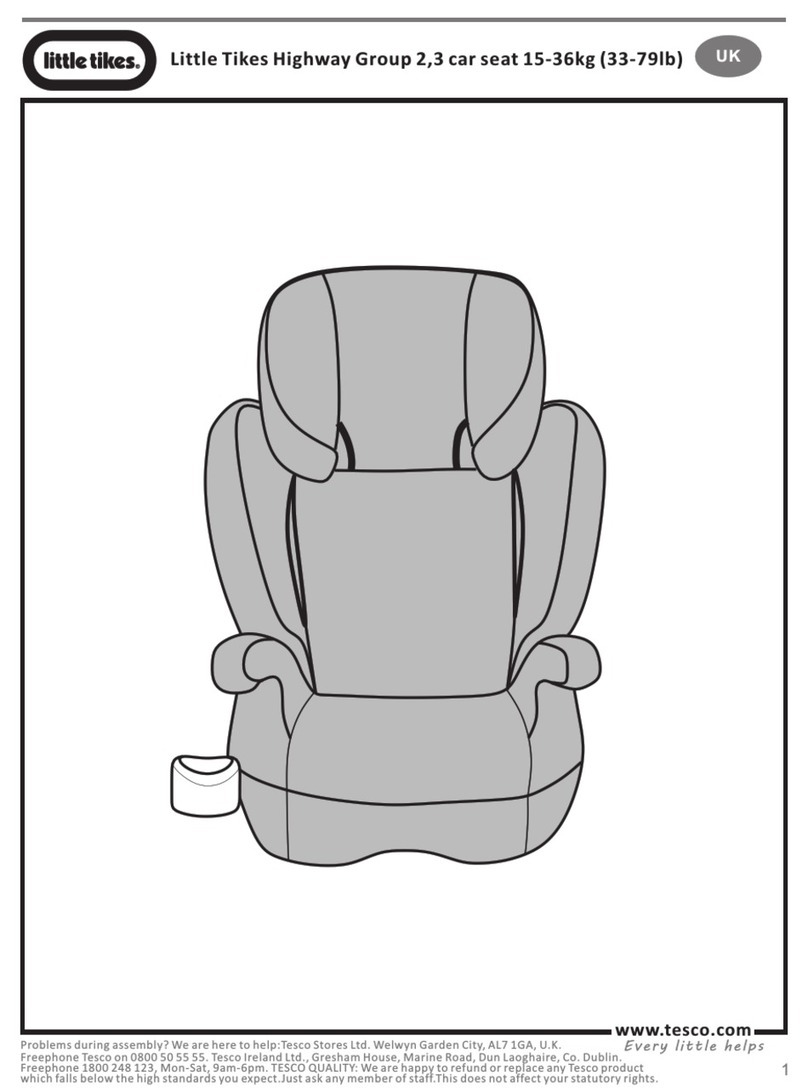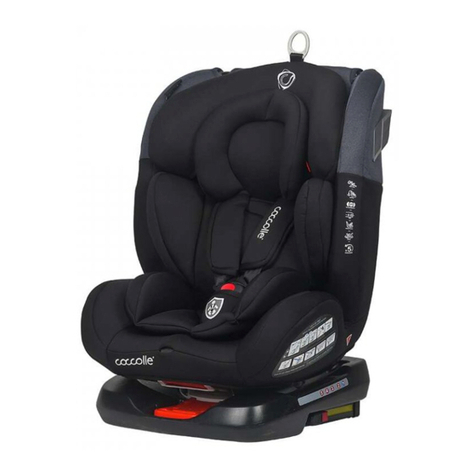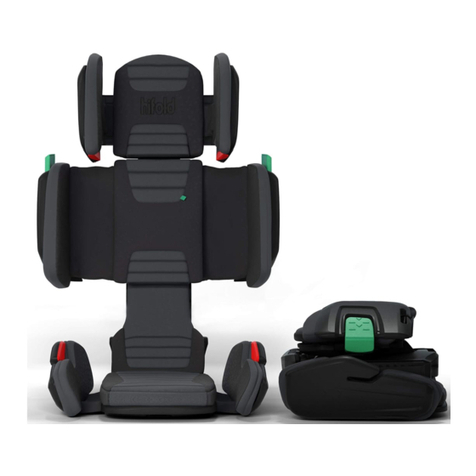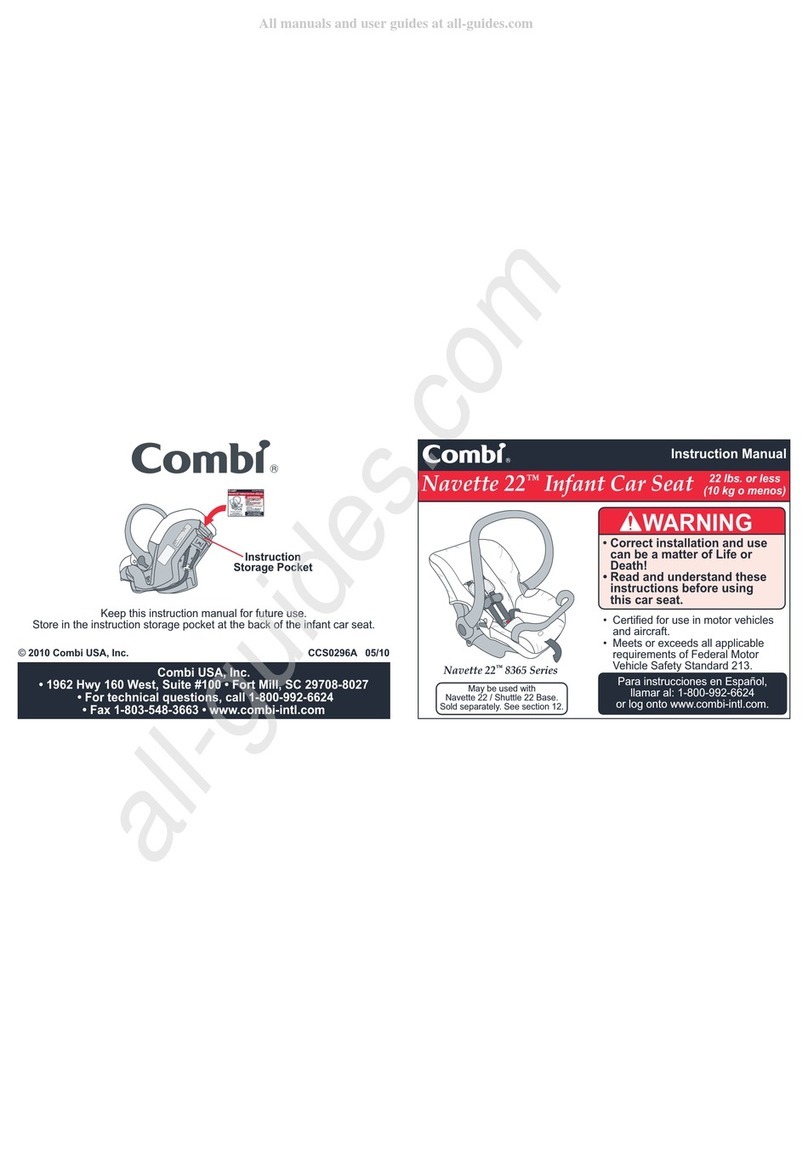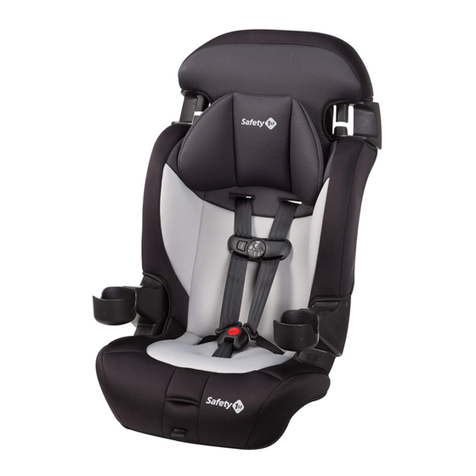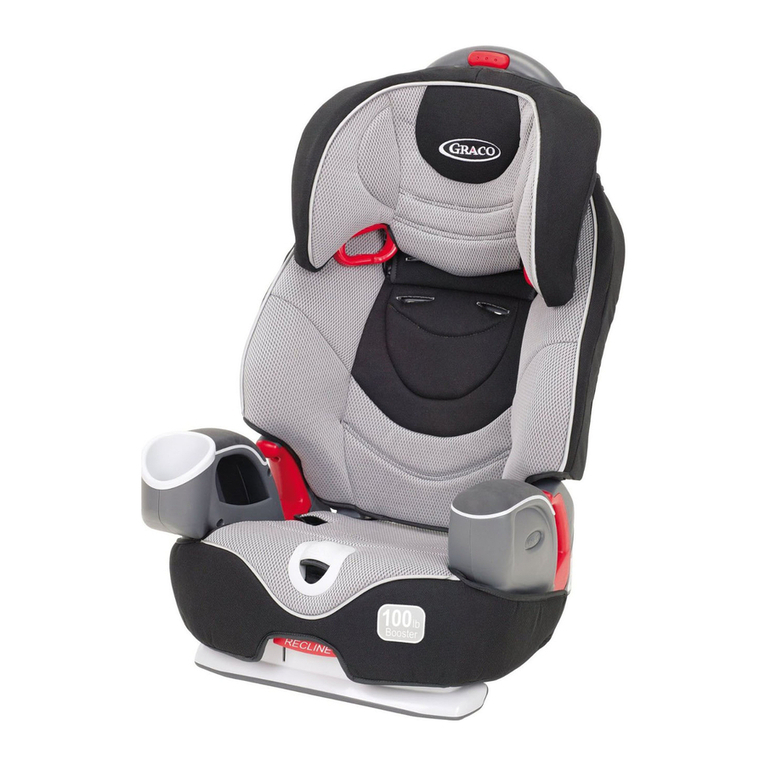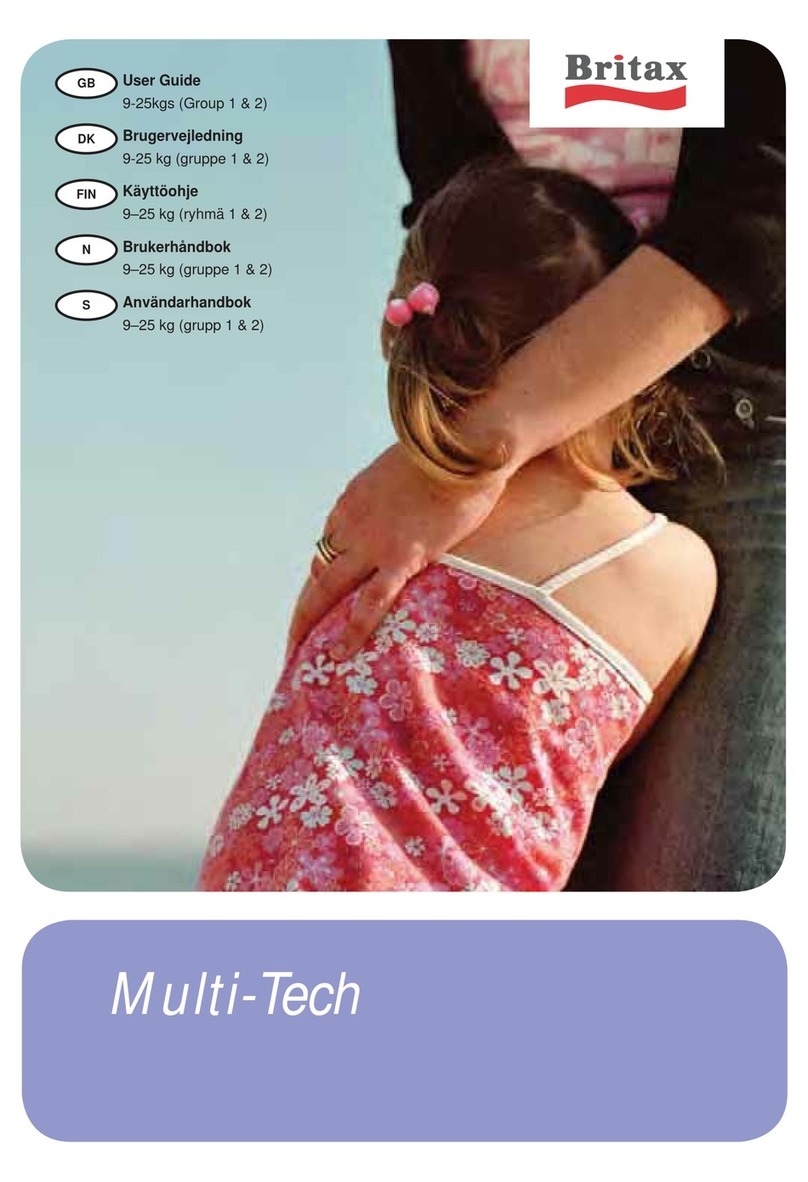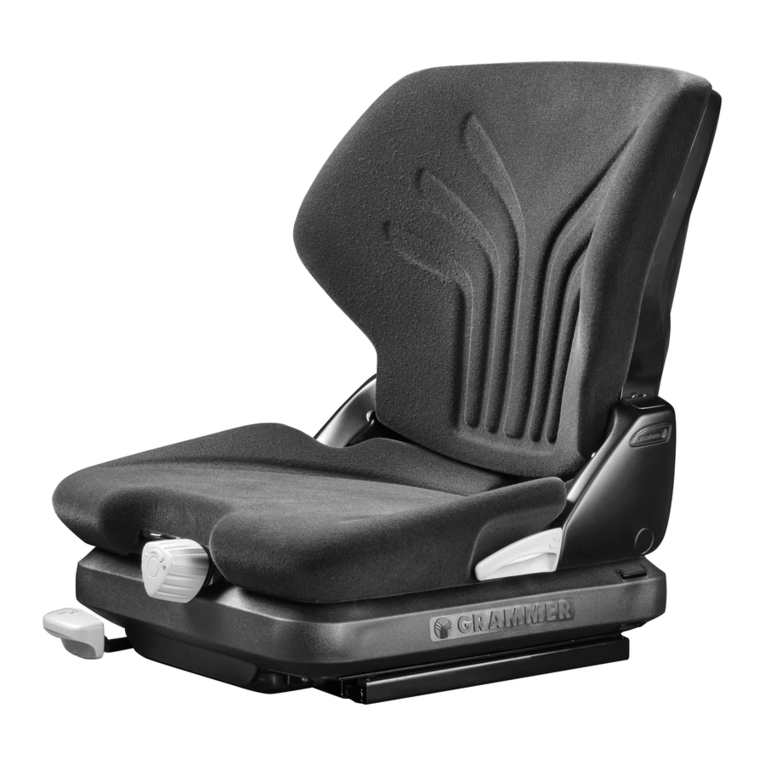3
EN
Axkid Minikid
Instruction Manual
Rear-facing 0-25 kg with vehicle seat belt and tethers
Read this instruction manual carefully before installing the Minikid child restraint. If in doubt, contact
your retailer who can demonstrate a correct installation. An incorrect installation could endanger
your child.
Axkid always recommends using an infant carrier until the child is steady enough to sit unaided.
Axkid does not recommend using Minikid 0-25 kg from birth, because smaller children need better
support and protection the rst couple of months of life.
Do not use a child restraint in a seating position where an active airbag is tted. If you still wish to
install the Minikid in this location the airbag must be disconnected at an authorised service centre.
Some vehicles may be equipped with a switch which allows you to manually switch the airbag o. It
is important to always check if the vehicle’s indicator light shows that the airbag is turned o.
Extensive research has shown that the risk of serious injury or worse is ve times greater for a young
child when in a forward facing restraint compared to a rearward-facing restraint. In Minikid your child
can travel rearward-facing up to 25kg.
Always use the support leg when installing the Minikid seat. The support leg is a very important
safety feature designed to maximise your child’s safety in an accident.
Should you have an accident, no matter how small, your child restraint should be replaced. It may
have damage that is undetectable and could seriously jeopardize your child’s safety. For this reason
Axkid do not recommend purchasing second hand child restraints.
Never leave your child unattended in the car.
Ensure any luggage or loose objects are secured in your vehicle as they may cause injuries to
passengers in the event of a collision.
Store this instruction manual in the designated pocket (O) on the car seat.
Read this instruction manual before installing the Minikid child restraint in your vehicle. For
more information and installation videos visit www.axkid.com.
Thank you for choosing an Axkid child seat. Our team has over 30 years combined experience within child
safety, and we have done our utmost to make the Minikid child seat as safe as possible. The Minikid child
restraint is approved according to ECE R44/04, the latest European standards for child safety. To maximise
your child’s safety it is important that you keep the following in mind;
Important information
V10
